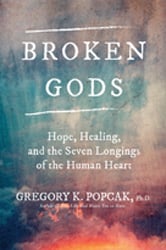Let’s have some music for your weekend!
My kids are feeling poorly. I’m blogged out from all the coverage of the Pantheacon transgender/Z Budapest conflict/discussion. So let’s have some beauty! To song!
The most famous of all songs about the Virgin Mary is the Ave Maria, the Latin version of the Hail Mary: “Hail Mary, full of grace, God is with you; blessed are you among women and blessed it the fruit of your womb, Jesus; Holy Mary, Mother of God, pray for us sinners, now and at the hour of our death. Amen.” This is a beautiful, simple prayer, that is essentially Marian theology distilled in to three sentences.
Let’s start with the most well known, and for good reason: Franz Schubert’s. I’m not sure who the singer or accompanist is but they do a very good job.
https://www.youtube.com/watch?v=”http://www.youtube.com/watch?v=2bosouX_d8Y”I recently read the following in an article, which is well worth reading in its entirety. (Thanks, Adam.)
‘Franz Schubert’s “Ave Maria,” which surprised some music critics when it debuted in 1825: Schubert seldom showed religious feeling in his compositions, yet “Ave Maria” is a breathtaking work of adoration of the Virgin Mary. What was with the sudden piety? Schubert dryly answered: “I think this is due to the fact that I never forced devotion in myself and never compose hymns or prayers of that kind unless it overcomes me unawares; but then it is usually the right and true devotion.” This musical prayer became among the most familiar and enduring religious pieces in history.’
Franz Biebl’s version is perhaps my all time favorite choral work involving the Ave Maria. This version is done by the phenomenal all male ensemble, Chanticleer. (Check out the mustache on one of the singers!)
https://www.youtube.com/watch?v=”http://www.youtube.com/watch?v=XVyCJlPiHFg”Another musical Marian form is the Stabat Mater, from a 12th century poem. During this time period a new form of devotion developed in Europe, centered on the Mater Dolorosa – the Sorrowful Mother. Stabat Mater, Latin for ‘the Mother stood’, or with the first line of the poem (Stabat Mater dolorosa), ‘the sorrowful Mother stood’. What did she stand next to? The cross and Jesus, her son, crucified upon it. (For the absolute best book I’ve read about this form of devotion and its development, read Rachel Fulton’s From Judgement to Passion.)
In graduate school I wrote an entire paper on this particular poem and its use in music. I listened to something approaching twenty settings of it. The following are a few that stood out to me.
Here is Pergolesi’s version:
https://www.youtube.com/watch?v=”http://www.youtube.com/watch?v=_2zc0wTORSI”Rossini’s:
https://www.youtube.com/watch?v=”http://www.youtube.com/watch?v=MU9cyUBNH5U”Dvorák’s, perhaps the most well-known setting, certainly the most well-known to me.
http://www.youtube.com/watch?v=Xj1mZ9k6YOA”For more modern interpretations, Arvo Pärt:
https://www.youtube.com/watch?v=”http://www.youtube.com/watch?v=X9DNJ24u-ms”Penderecki’s also impressed me, but I can’t find a good clip of it.
Let us not forget the glorious Eastern Orthodox tradition and their many songs to the Theotokos! The Estonian Phiharmonic Chamber Choir is world-renown and made a CD focusing on Russian Orthodox hymns. It is superb and I highly recommend it.
https://www.youtube.com/watch?v=”http://www.youtube.com/watch?v=ywKQy52d9UM”Anyone know of some non-classical songs about Mary? Clearly my classical music background is getting the best of me! I know of one gospel song, The Virgin Mary had a Baby Boy, and Breath of Heaven by Amy Grant:
https://www.youtube.com/watch?v=”http://www.youtube.com/watch?v=EdLwZCprtkI”Have a great weekend!















